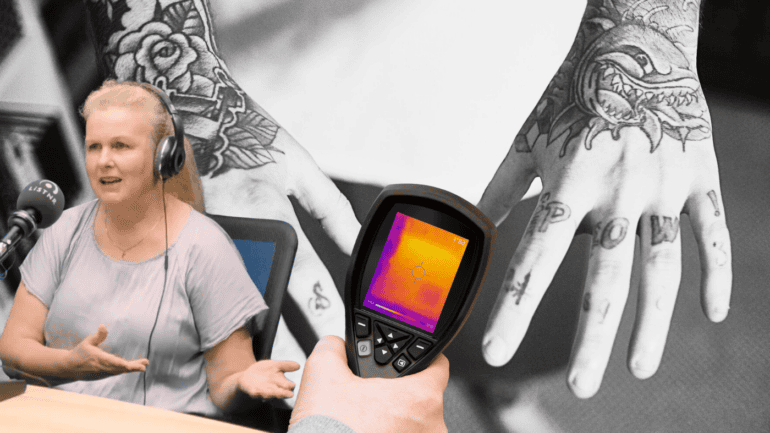Tattoos are useful for identifying human remains, but in the case of laser removal, burns or even decomposition, forensic photographers need to look a little deeper.
Forensic photographer Karen Byrne spoke to Crime Insiders host Kathryn Fox about how tattoos are examined in criminal investigations.
Byrne was working in a mortuary to examine a mummified body. There was no visible evidence of tattoos.
“I’ve been doing this job for a long time, and usually with tattoos, you can see partial tattoo or some evidence of it,” Byrne said.
Although Byrne couldn’t see any sign of tattoos, she decided to use an infrared camera to double-check.
“I went to my computer and brought up a photograph of the back, and I nearly fell off my chair.”
Byrne talks about forensic tattoo scanning in episode 84 of Crime Insiders, ‘The stories tattoos tell in criminal investigations’:
“There was a massive tattoo a 30 centimetre by 15 centimetre. Amazing. You know, geographic tattoo. Very identifiable. I was actually shaking.”
“It was actually one of those CSI moments […] I rang our ID team and they were very excited. This is big news for someone we’re trying to identify.”
Byrne said while tattoos might not be visible to the naked eye, an infrared camera will capture them as clearly as the day they were done.
“Infrared radiation will penetrate deeper into the skin. And we can record the tattoo very clearly. In fact, it’s incredible the way it comes up.”
Hear about the stories tattoos tell in criminal investigations on this episode of Crime Insiders.
Subscribe to Crime Insiders, taking you beyond true crime. In groundbreaking interviews, explore the world of policing and forensics through stories from the world’s most experienced and decorated experts.
